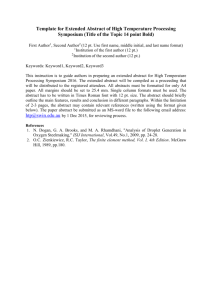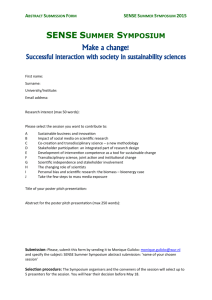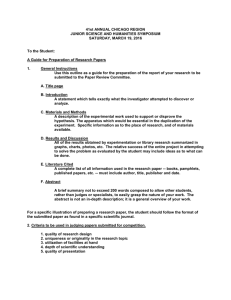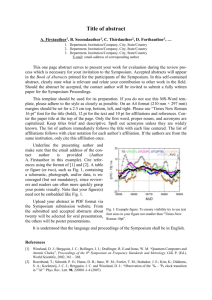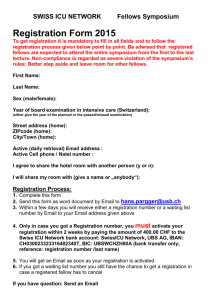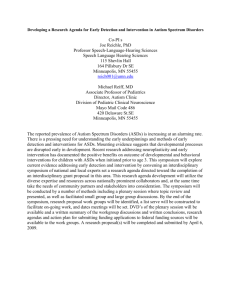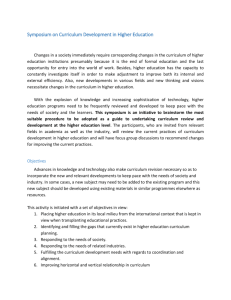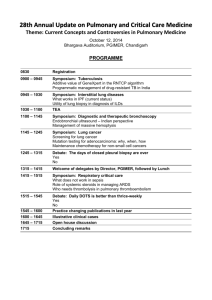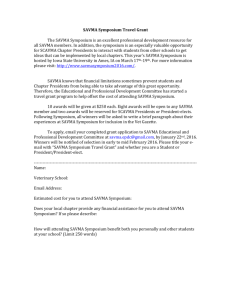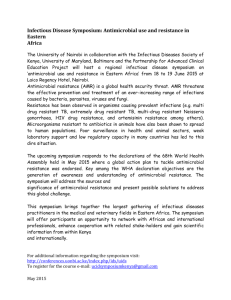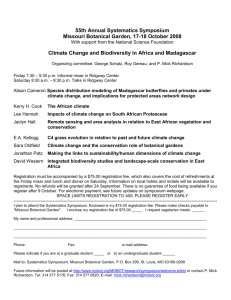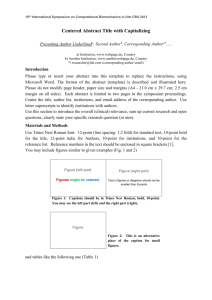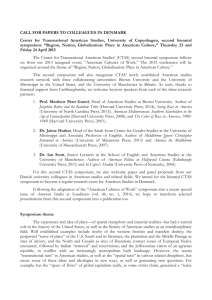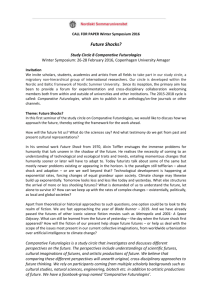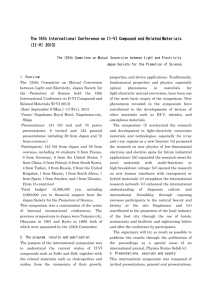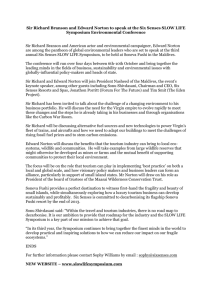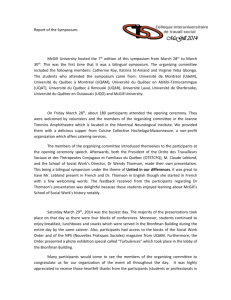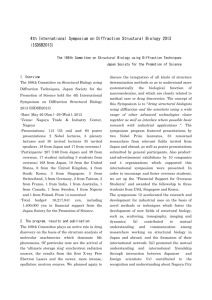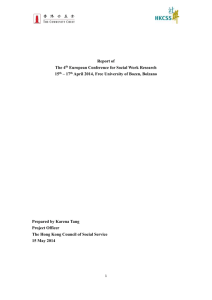template
advertisement
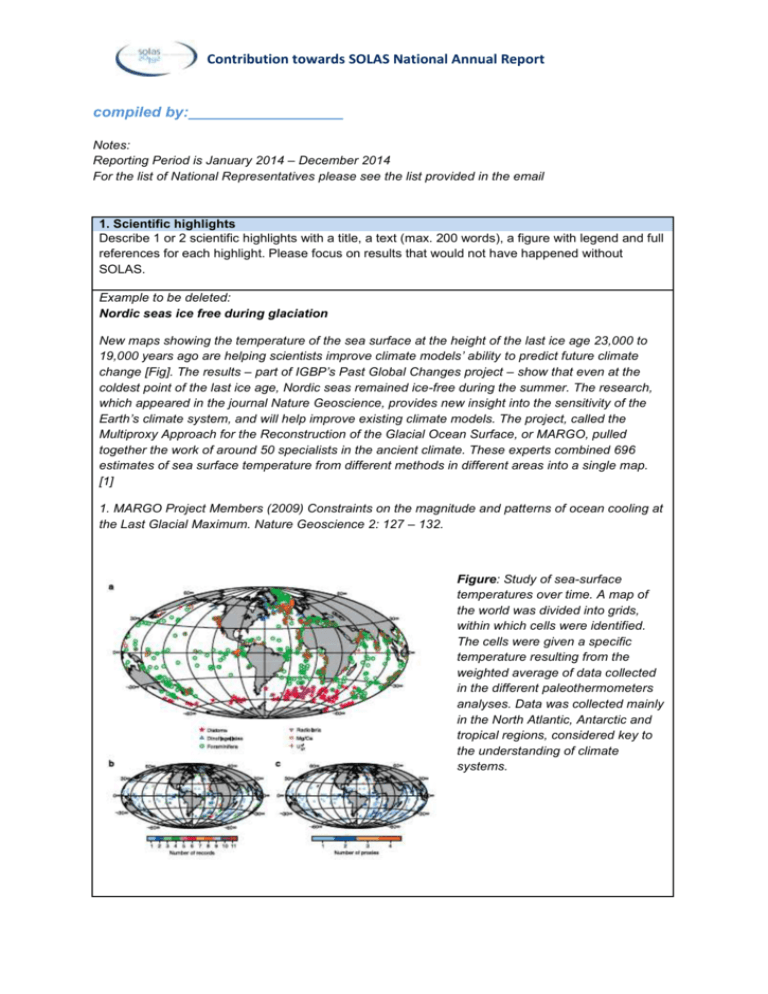
Contribution towards SOLAS National Annual Report compiled by:__________________ Notes: Reporting Period is January 2014 – December 2014 For the list of National Representatives please see the list provided in the email 1. Scientific highlights Describe 1 or 2 scientific highlights with a title, a text (max. 200 words), a figure with legend and full references for each highlight. Please focus on results that would not have happened without SOLAS. Example to be deleted: Nordic seas ice free during glaciation New maps showing the temperature of the sea surface at the height of the last ice age 23,000 to 19,000 years ago are helping scientists improve climate models’ ability to predict future climate change [Fig]. The results – part of IGBP’s Past Global Changes project – show that even at the coldest point of the last ice age, Nordic seas remained ice-free during the summer. The research, which appeared in the journal Nature Geoscience, provides new insight into the sensitivity of the Earth’s climate system, and will help improve existing climate models. The project, called the Multiproxy Approach for the Reconstruction of the Glacial Ocean Surface, or MARGO, pulled together the work of around 50 specialists in the ancient climate. These experts combined 696 estimates of sea surface temperature from different methods in different areas into a single map. [1] 1. MARGO Project Members (2009) Constraints on the magnitude and patterns of ocean cooling at the Last Glacial Maximum. Nature Geoscience 2: 127 – 132. Figure: Study of sea-surface temperatures over time. A map of the world was divided into grids, within which cells were identified. The cells were given a specific temperature resulting from the weighted average of data collected in the different paleothermometers analyses. Data was collected mainly in the North Atlantic, Antarctic and tropical regions, considered key to the understanding of climate systems. 2. International interactions and collaborations (including contributions to international assessments such as the IPCC, links with observation communities, links with policy makers or socio-economics circles, etc.) Example to be deleted: * GLOBEC-IMBER-SOLAS-EUROCEANS symposium on “Dynamics of Eastern Boundary Upwelling Ecosystems: integrative and comparative approaches”. Las Palmas, Spain, 2-6 June 2008. This was the first symposium co-sponsored by all three SCOR/IGBP marine projects. The symposium considered most aspects of the dynamics, structure and functioning of the four major eastern boundary upwelling ecosystems (Benguela, California, Canary and Humboldt Current systems). The symposium was convened by Pierre Fréon, IRD (France), Javier Aristegui, ULPGC (Spain) and Manuel Barange, PML (UK). Over 350 scientists attended the symposium. Approximately 50 papers are being processed for the Proceedings in Progress in Oceanography. 3. Activities/main accomplishments (research projects, cruises, special events, workshops, remote sensing used, model and data intercomparisons etc.) 4. Human dimensions (outreach, capacity building, public engagement etc.) 5. Top 10 publications in 2013 (Reports, ACCEPTED articles, models, datasets, products, website etc.) For journal articles please follow the proposed format: Author list (surname and initials (one space but no full stops between initials), year of publication, article title, full title of publication (italics), volume, page numbers, DOI (DOI optional). 6. Goals, priorities and plans for future activities/events 7. Other comments


